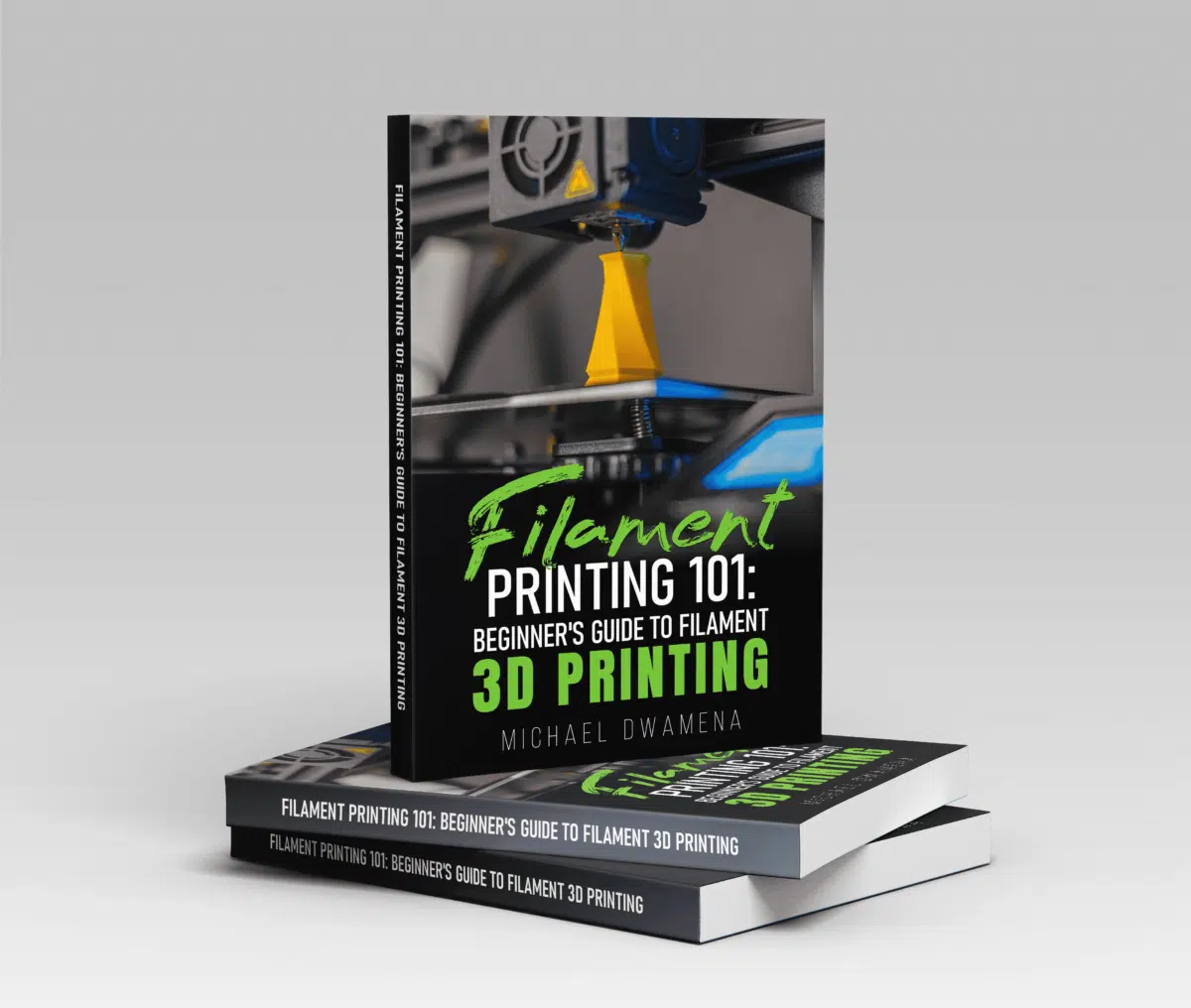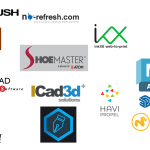When it comes to 3D printing filaments, polyethylene terephthalate glycol (PETG) is one of the most popular. This material combines the qualities of ABS and PLA filaments into a strong yet easy-to-print option. Moreover, the glycol gives PETG a unique, clear visual property, making it an excellent choice for glass-like applications and shiny-surfaced end products. Before working with it, you might be wondering whether PETG is a hygroscopic material.
Concerns about PETG filaments absorbing moisture are justified. The material is hygroscopic, meaning that it tends to absorb water from the environment. Using wet PETG for 3D printing will produce poor-quality results; that’s why you have to dry the filament before using it.
Does PETG Filament Absorb Moisture?
In essence, PETG is a polymer, and like all polymers, it absorbs water. This moisture triggers a hydrolysis process that breaks down polymer chains. The complicated chemical process won’t cause the filament to break, but it affects its quality.
Moisture saturation has a negative impact on the polymer’s tensile strength and clarity, ultimately affecting the print. Wet PETG forms air bubbles during the printing process that will weaken the layer adhesion and result in an undesirable finish.
For this reason, you should store PETG filament in a cool, dry place, ideally in its original package. Once the package is open, dry the filament before using it if it was exposed to air for more than a few days.
How Humidity Affects 3D Printer Filaments
Using a wet spool is never a good idea. The absorbed moisture can weaken the filament structure, leading to low-quality prints and printing errors. In addition to these problems, humidity has other effects on 3D printer filaments.
Signs of Possible Moisture Content
When using any type of hygroscopic filament – including PETG – there are common signs that tell you the filament is wet. If you notice any of the symptoms below, you should dry out the filament before using it for your project.
- Filament popping sounds: Cracks or popping sounds coming are generally caused by the moisture-saturated filament. As the water evaporates, it leaves tiny holes inside the filament. The cracking or popping sounds are then caused by the air escaping these holes.
- Uneven extrusion lines: The holes left behind by evaporated water affect the PETG’s mechanical properties and structural integrity. During the printing process, you’ll notice uneven extrusion lines caused by the inconsistent layer thickness.
- Reduced layer adhesion: Another problem linked to the evaporated water is the poor layer adhesion. Because there are holes in the layers, the surface has a lower grip, and the layers might not stick to one another. This could cause the object to bend or lose its shape as you’re printing it.
- Stringing, bubbling, or oozing: A lack of structural integrity can also lead to stringing, PETG bubbling, or oozing. All of them can have a negative impact on your print.
- Steam coming off the filament: One of the easiest ways to tell that you’re using wet filament is by noticing steam coming off the filament. Steam is produced by water as it evaporates.
- Fragile, brittle print: As mentioned above, wet filament loses its strength and structural integrity during printing. As a result, the object may become brittle or fragile, and you could damage it easily.
- Filament not adhering to printer bed: Last but not least, you may notice that the filament doesn’t adhere to the print bed. This happens because the holes left behind by evaporating water reduce filament adherence.
Why You Should Dry Your Filament
Printing three-dimensional objects is a complex process that involves heat. When the printer heats the filament, the water molecules that were absorbed by the polymer evaporate. The evaporation process leaves gaps in the melted filament, giving the printed object a bubbly effect.
Drying the filament before printing the object allows the water to evaporate and the filament to regain its structural strength. Slow drying leaves no gaps in the material, preserving its integrity. The filament layers will adhere to one another and to the printing bed, ensuring a high-quality print.
There are several ways to dry PETG filament. You could either use a specific filament dryer, your oven, or even a food dehydrator.
- Our new Filament Printing 101 Course is just for you! Lean how to create perfect professional prints without all the hassle.
- Don't let common mistakes hold you back, click the link to learn more and get ahead now!
Drying Your PETG In 3 Basic Methods
While there are several filament drying methods you could use, the most common ones include a filament dryer, oven, or food dehydrator. No matter what device you use, the secret to proper drying is setting the right PETG drying temperature.
Filament Dryer
Specialized filament dryers are the best devices to use to wick moisture from PETG. These dryers look like mini ovens but have settings that allow you to place the filament in the drying chamber and forget about it.
Most filament dryers have several settings that allow you to dry several types of spools, such as PETG, ABS, and PLA.
Pre-set PETG settings leave the guesswork out of the game. The filament dryer will heat the chamber to 149°F (65°C) and will generally emit an acoustic signal when the spool is dry (generally after about four to six hours).
Newer filament dryer models also have automatic humidity control settings that allow you to store the PETG spools at low humidity and low temperatures. This means you’ll never have to worry about filament storage or the spool getting wet ever again.
Oven
While specialized filament dryers are the best method, you might not want to spend money. This is where your good old oven steps in.
Essentially, the oven can do the same thing the filament dryer does – heat the cabinet to a set temperature and maintain the temperature constant for a set period of time.
For drying PETG, set your oven to 149°F and its timer to six hours. The filament might dry faster, but because the oven doesn’t control the moisture level, you should let it dry for longer to stay on the safe side.
Food Dehydrator
A food dehydrator is designed to remove moisture from fruits, vegetables, and meats, but who said that you couldn’t use it to remove moisture from polymers, too?
Food dehydrators work like your oven – set the temperature and time, then place the filament spool in the machine. Wait for it until it’s dry, then you’re good to go.
While this method provides an excellent alternative to ovens and filament dryers, the main disadvantage is the size of the appliance. Most food dehydrators have small dimensions and may not fit the entire filament spool.
For this reason, you should buy a dehydrator that’s big enough to accommodate the spool size you usually use.
Keep Your Filaments Dry By Storing It Properly
As explained above, PETG filaments are polymers that absorb moisture from the air naturally. This is why you should always store the spools in rooms with a relative air humidity between 30% and 50% – that’s because, despite its hygroscopic properties – PETG doesn’t absorb moisture as fast as other polymer materials.
An easy way to maintain the relative humidity levels within the mentioned range is by using room dehumidifiers (your AC’s dehumidifier could work, but you can also use salts or other devices manufactured specifically for the purpose).
If you like your filament as dry as possible, storing it in a closed box could be a better choice. Here are a few tips for storing PETG filament properly.
Keep Moisture Under Control
If you prefer to keep the filament in open-air, store it in a well-ventilated room that has low humidity levels. However, don’t rely on how you feel the air.
Use a hygrometer to measure the air humidity in the room – ideally, you should buy a Bluetooth or Wi-Fi hygrometer that connects to your mobile phone and allows you to monitor moisture levels 24/7.
Pay particular attention to humidity fluctuations on rainy days and use a room dehumidifier to remove excess moisture if you have to. Keeping the humidity levels at about 30% at all times is your best bet.
Use Airtight Plastic Bags
Not everyone likes the hassle of monitoring indoor humidity levels, and airtight plastic bags can help you skip the hygrometer.
Airtight plastic bags are cheap, and once sealed, they don’t let air pass through. While this means that no humidity gets in, it also means that moisture can’t escape. Thus, you should place a packet or two of silica gel inside, together with the filament spool.
Store Filament in Dry Boxes
Dry boxes are devices designed to maintain a certain temperature and humidity. They cost more than plastic pouches but do a better job at keeping your filament spool dry.
Dry boxes come in various sizes, or you could invest in a dry cabinet if you want to store many spools.
Use Vacuum Bags
If you don’t want to buy a device and don’t have any airtight bags at home, you can replace them with moisture resistant vacuum bags.
Simply place the filament spool inside the bag and seal it. Then, use the vacuum cleaner to remove all air from the bag. Alongside the spool, don’t forget to throw in a packet or two of silica gel before vacuum-sealing it.
Use Airtight Containers and Silica Gel
While vacuum bags can replace airtight plastic bags, an airtight container can replace the dry box. Get a container that’s big enough to accommodate the spool and place a few bags of silica gel inside. Place the spool inside the container and close its lid.
The desiccant will trap all moisture released by the spool and any air left inside the container, while the airtight lid will prevent moist air from getting in.
Frequently Asked Questions
Does PETG need an enclosure?
PETG doesn’t need an enclosure – such as an airtight container or dry box – but it needs low humidity levels. If you don’t mind monitoring the air moisture levels in the storage room and using dehumidifiers if needed, you can keep the PETG spool anywhere you want.
What temperature can I print PETG?
PETG requires a moderate printing temperature, generally between 446°F (230°C) and 482°F (250°C). This temperature is hot enough to cause any moisture soaked in the filament to evaporate, leaving gaps that can compromise the material’s strength and integrity.
For this reason, you should only print dry PETG. If you’re not sure whether or not the filament is dry, use one of the drying methods above for four hours.
Is TPU hygroscopic?
Like PETG, TPU elastomers are hygroscopic in nature and absorb moisture in the same way PETG does. Leaving TPU filament in a moist room can negatively impact the quality of your print, so you should store the TPU spool with silica gel in a dry room, a dry box, or in an airtight container or bag.
The printing temperature is also similar to PETG’s printing temperature, but you could use a lower temperature setting of 428°F (220°C) if you want to.
To End
PETG filament is a hygroscopic material, meaning that it absorbs moisture from the environment. Printing with wet PETG can have a negative effect on the printed object – the material will often become brittle, and the object can break or crack easily.
Proper filament storage and drying before printing are crucial steps to ensure a positive project outcome. We hope this guide can help you prevent printing incidents and expensive filament wasting.
Reference
Hsueh et al. – Effect of Printing Parameters on the Thermal and Mechanical Properties of 3D-Printed PLA and PETG, Using Fused Deposition Modeling – Polymers (Basel)



